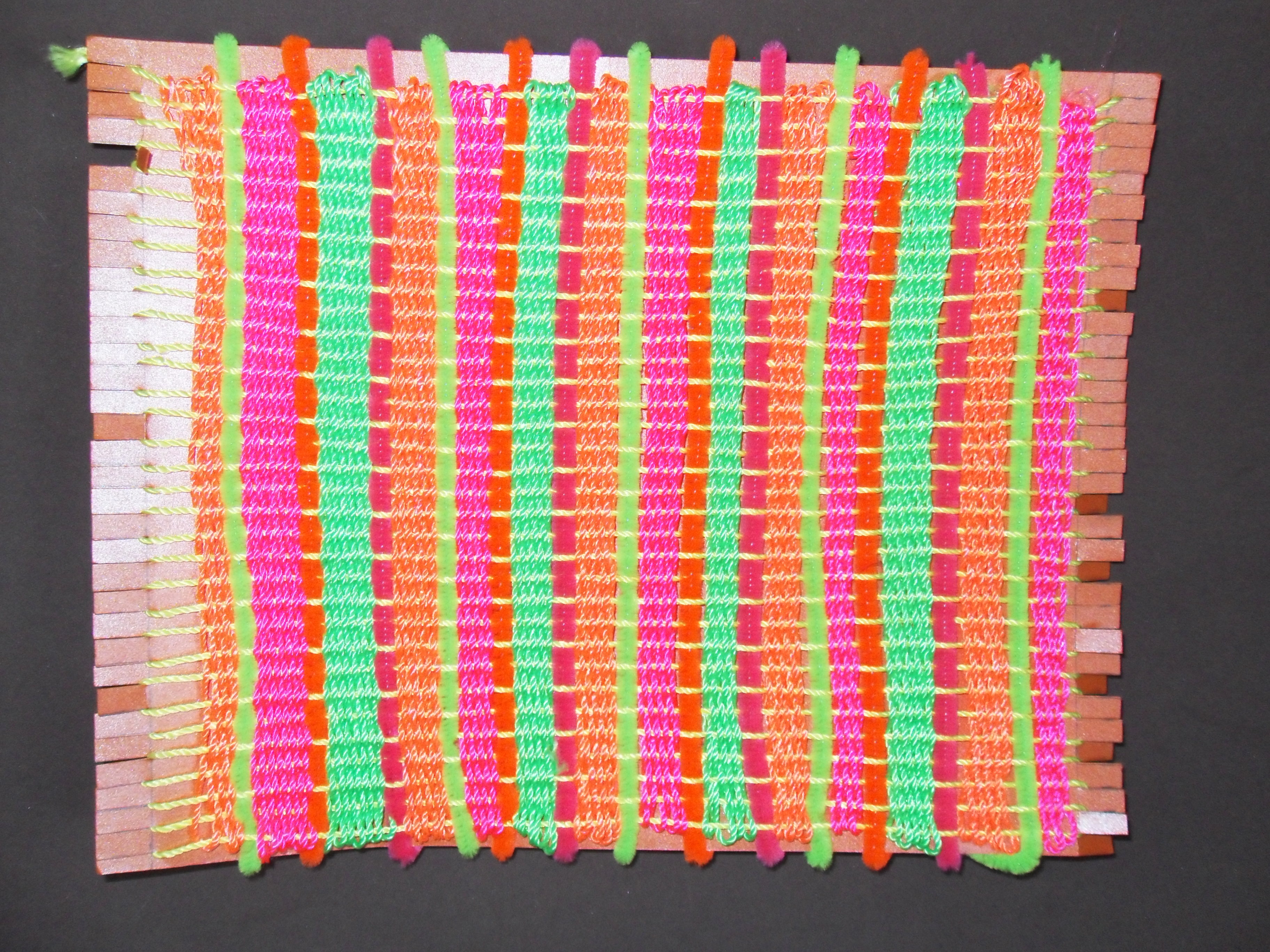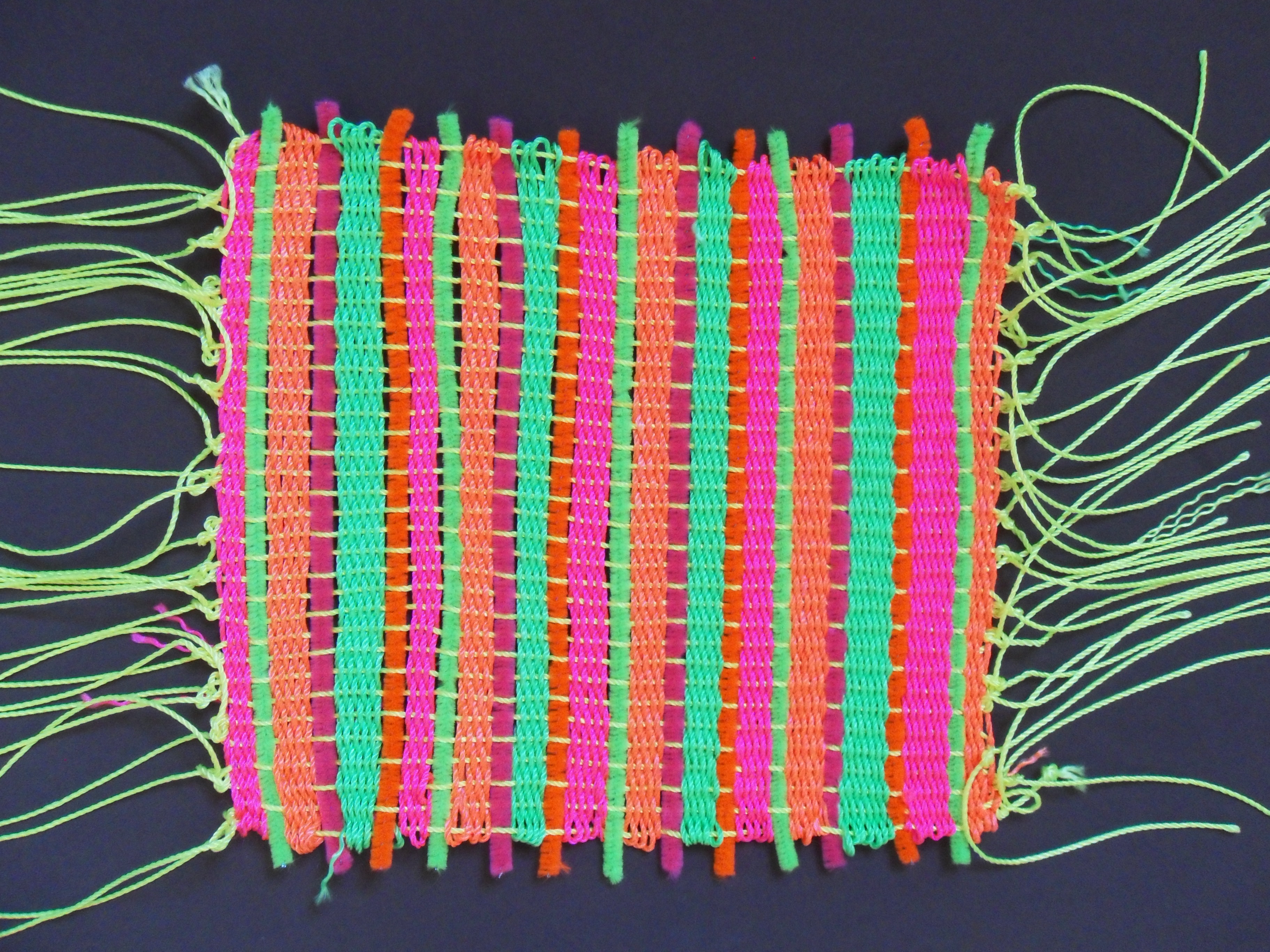Materials:
Cardboard
String
Ruler
Pencil/eraser
Scissors
Yarn
Large-eyed tapestry needle (optional)
Ribbon
Feathers
Wool
Strips of fabric
Leaves
Twigs
String
- Weaving consists of a warp and a weft. The warp comprises the vertical strings of the loom while the weft consists of the yarn horizontally interlaced through the weft. Take a piece of strong cardboard. Measure and cut ¼” incisions at regular intervals of ¼” to 1/8” on both ends of the cardboard.
- To make the warp: Take heavy string (i.e., kite string) and make a knot at one end. Stretch a continuous length of string across the cardboard. In other words, loop the string from one end of the cardboard to the other and back up again. When finished, cut and make a knot in the back or tape it to the back of the cardboard. Always leave a little extra string for knotting at either end.
- To make the weft: Think of a theme or a design for the weaving. The design is up to you! Use a variety of materials to weave in and out as you did with the paper weaving. Start with about an inch and a half of warp at the bottom. Make sure strips of material alternate with each row. Roll the material into a ball if possible and pass it through the warp back and forth for several rows depending on the design. Tuck the end in the back of the warp. Do not tie a knot.
- Tips: You can using the tapestry needle to weave. A ruler will help you if the warp so you can pass material through easily but you must lift every other string.
- When weaving is finished, cut any loose thread in the back of the warp but don’t cut too close to the weft.






